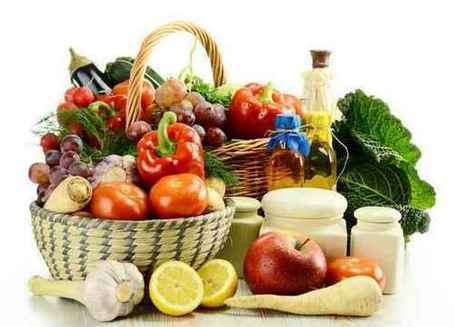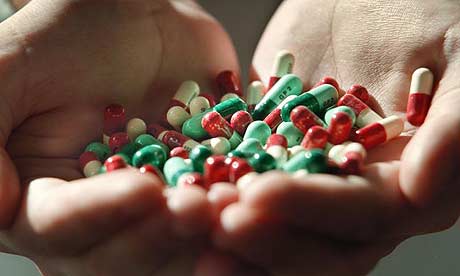Malaysia Consumer Day 2013 (HPM 2013)
Malaysia Consumer Day 2013 is just around the corner! Let’s celebrate it by participating in 11 competitions held in the national level.
SWITCH!: National Energy Efficiency Awareness Campaign
SWITCH! is an effort by Non-Government Organisation (NGO) with the support from government and industries to increase the awareness on importance of ‘efficiency’ in the usage of energy and to play our roles and responsibility together with the government.
Do You as Consumer Aware Enough?
Learn more about consumer and consumerism by clicking on the picture.
Danger of Counterfeit and Fake Products
Dou you know counterfeit is really a serious problem to the world? Find out more about counterfeit by clicking on this picture.
Federation of Malaysian Consumers Associations (FOMCA)
FOMCA is a national non-govermental organization, which is the umbrella body of registered consumer associations in Malaysia. Find out more at their website.
Tuesday, July 16, 2013
Monday, July 15, 2013
Seizures of Counterfeit Foods in Yemen
With a weak economy, people are increasingly turning to street vendors and markets for cheaper goods. The influx of people is resulting in more demand for goods, leading to more expired and counterfeit products, said the director of the Consumer Protection Authority, Ali Abdulaziz Al-Haj.
The Capital Secretariat confiscated nearly 50,000 packs of counterfeit chewing gum in Al-Sonaina shopping center in Sana’a. The owner of the shopping center was fined YR 400,000, about $1900.
“Around the world, food fraud is an epidemic — in every single country where food is produced or grown, food fraud is occurring,” said Mitchell Weinberg to The New York Times. “Just about every single ingredient that has even a moderate economic value is potentially vulnerable to fraud.”
10 Counterfeit Food Products Usually Consumed
1. Orange juice
2. Honey
3. Truffle oil
4. Blueberries
The nonprofit Consumer Wellness Center reported that many "blueberries" in popular products they found were nothing more than glops of sugar, corn syrup, starch, hydrogenated oil, artificial flavors and artificial food dye blue No. 2 and red No. 40.
5. Milk
6. Fish
Samples labeled as snapper and tuna had the highest mislabeling rates (87 and 59 percent); only seven of the 120 samples of red snapper purchased nationwide were actually red snapper, the other 113 samples were another fish.
At the same time, farmed fish gets sold as wild catch and scallops are sometimes stamped-out whitefish. And buyer beware: A Consumer Reports study included a "grouper" sample that was really tilefish, a fish that contains frighteningly high levels of mercury.
7. Saffron
8. Olive oil
In rare instances, varieties of non-food-grade oil may be added in. In one notorious case, more than 600 Spaniards died in 1981 after eating a non-food-grade, industrial rapeseed oil that was sold as olive oil.
9. Pomegranate juice
10. Coffee
The moral of the story? Don't be scared by all of this, but be aware. Buy whole foods when you can. Shop at trusted co-ops and farmers markets when possible. Know that well-known names and bigger brands should be somehwat reliable, since they have a lot to lose if they're busted for mislabeling. And look out for deals that seem to good to be true; that super cheap saffron could well be nothing more than died daisy petals.
Counterfeit Foods: Are You Eating the Real Thing?
But perhaps most frightening: The food you eat and the beverages you drink might not be the real thing.
While all counterfeiting is problematic, counterfeit food and beverages are especially tricky. The inherent health and safety risks are higher than those associated with, say, a knockoff pair of sunglasses, and they're also harder to detect once they've made their way onto store shelves. And unlike a fake purse whose handle falls off after you buy it, fake foods can hurt more than your wallet.
A Fish by Any Other Name
 But beyond mere mislabeling is a more insidious type of food fraud:
creating inferior products meant to pass as brand-name goods.
But beyond mere mislabeling is a more insidious type of food fraud:
creating inferior products meant to pass as brand-name goods.With advances in technology, a localized market and the constant push for value pricing, it's not always easy to tell what's real and what's fake.
Looks Can Be Very Deceiving
Counterfeiters will make most of their upfront investment in label-making equipment, and less investment in the inferior ingredients going into the food items. Simply put, the more they spend on the outside, the less they'll spend on the inside.
"In most cases, food fraud, or 'economically motivated adulteration,' is a pocketbook issue," Ward says, "but when ingredients are illegally substituted for what is on the label, consumers may be affected by unsuspected allergens or, in the worst case scenario, by toxic contaminants such as melamine."
Sunday, July 7, 2013
How to Identify a Counterfeit Medicine
-
Spot the difference. Is the lettering on the
packaging hazy and printed flat (rather than raised), or is the expiry
date missing?
-
Read carefully. Are the labelling and patient
information in a language you understand? If there are misspelled words,
contact the manufacturers – it can be a telltale sign.
-
Use your senses. Is the medicine the same size, shape, texture, colour and taste as your previous prescription?
-
Feel for consistency. When you handle the drug does it fall apart easily? If so, it could signal a fake.
- Do a price check. Does the cost of the drug seem very cheap in comparison with your official provider? If it’s much lower, it could be a scam.
Friday, July 5, 2013
Are Fake Prescription Drugs Killing Us?
As drug production moves to China and other developing nations where oversight is tougher to maintain and more sales take place online where provenance can be tougher to ascertain, Bate says that the most viable solution is increased vigilance on the part of drug makers, providers, and patients alike. He looks forward to a fast-approaching world in which hand-held spectrometers verify pills on the spot and praises various online-pharmacy certification programs.
Wednesday, July 3, 2013
The fight against counterfeit drugs
Tuesday, July 2, 2013
Control and Reporting Counterfeit Medicine In Malaysia

Picture 1: Meditag Hologram

Picture 2: Meditag Decoder

Picture 3: Verifying the authenticity of the Meditag hologram in pharmacy

Picture 4: Example of counterfeit medicine (with & without Meditag Hologram)
Source: MyHealth Ministry of Health Malaysia
Monday, July 1, 2013
What Is Counterfeit Medicines?
"medicines that are deliberately and fraudulently mislabelled with respect to identity and/or source. Both branded and generic products are subject to counterfeiting. Counterfeit medicines may include products with the correct ingredients or with the wrong ingredients, without active ingredients, with insufficient or too much active ingredient, or with fake packaging".
- No registration number
- False registration number
- Registration number belonging to other products
- Registration number which has been cancelled
- No safety label hologram Meditag TM
- False hologram Meditag TM
- Ingredient which differ from the original formula during registration
- A mixture of 2 registered products
- Information on the packaging which differ from the approved version






























